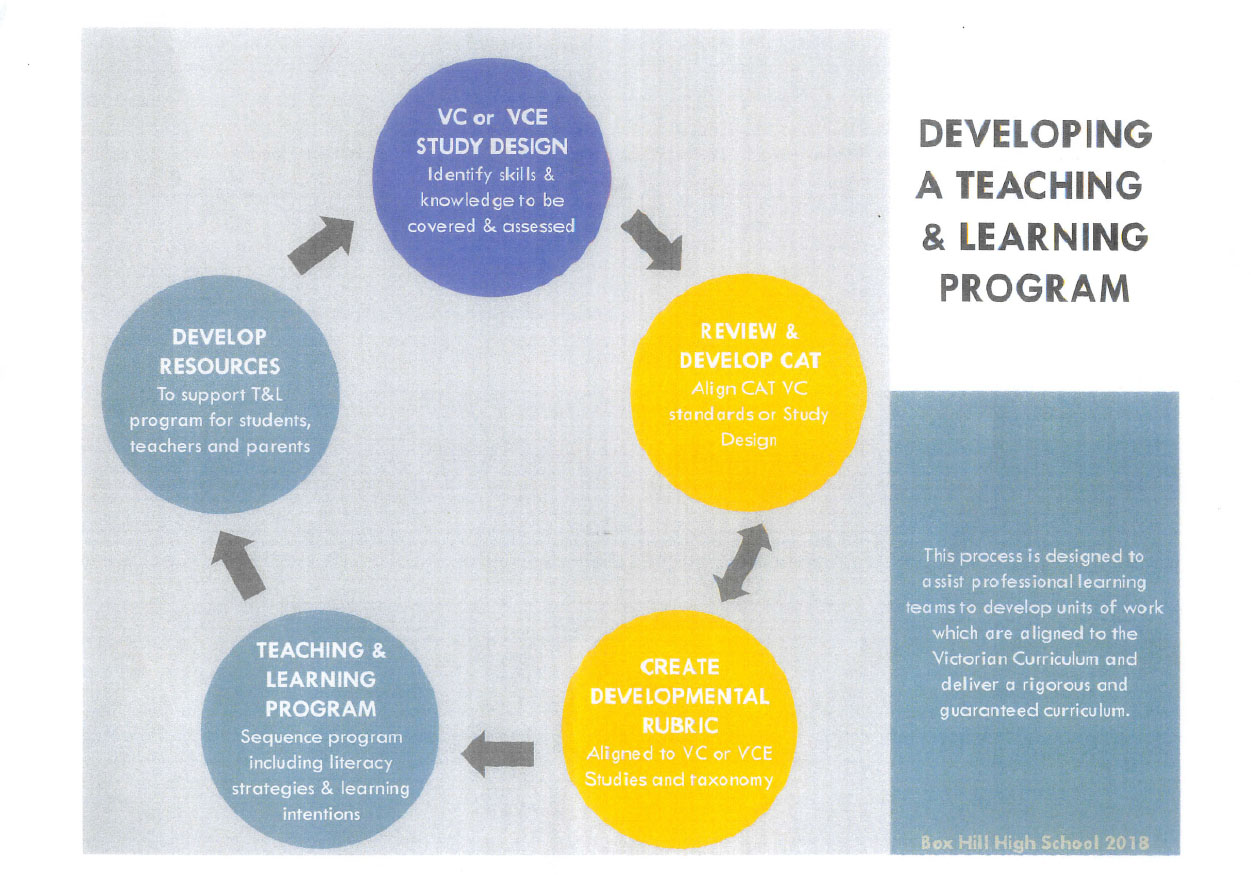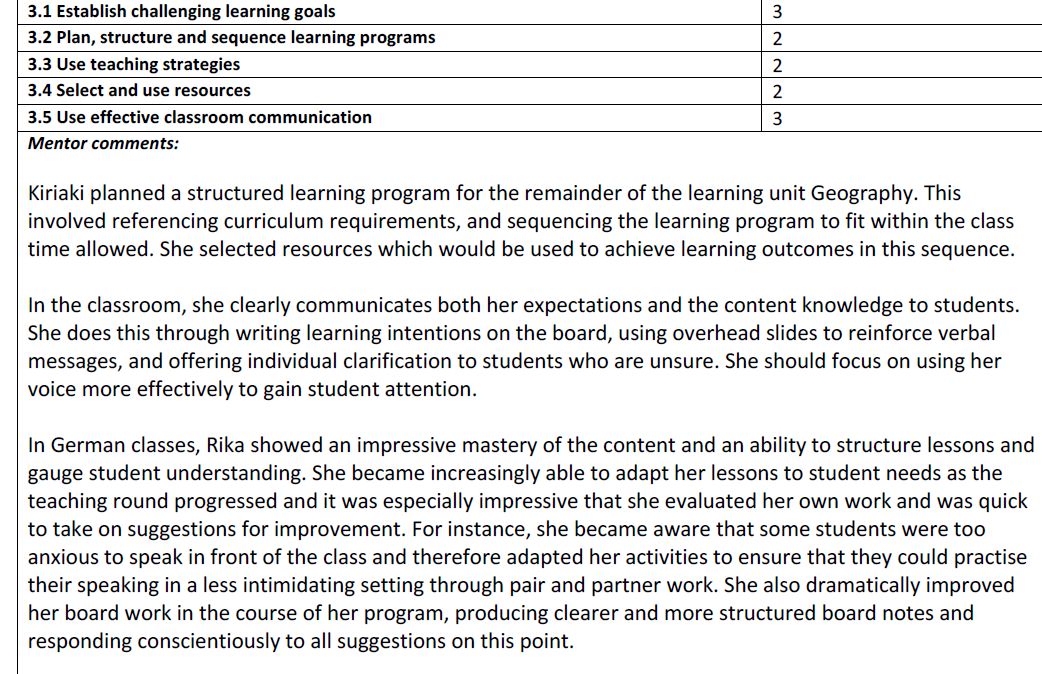Plan for and implement effective teaching and learning
AITSL Standards 3.2 & 3.3
Focus Areas
- Ability to contribute to the planning and implementation of engaging and worthwhile student learning
- Uses a range of strategies to engage students. These might include: whole group, small groups, whiteboard, Smartboard, ICT, peer teaching, multiple intelligences
- Demonstrates diversity of approaches across a sequence of lessons
Description
For my Year 8 Geography class, I discussed the areas of the curriculum with my Mentor and we decided that I should plan a series of lessons on the unit of Urbanization. My process comprised the following:
- Identifying the steps for developing a teaching program, as outlined in the school’s curriculum planning policy (Picture 3.1),
- Understanding curriculum requirements for that specific year level and lesson stage and organising a timeline for the learning sequence. For each lesson, I listed the desired outcomes in term of curriculum requirements and selected suitable resources to help students meet objectives. Simultaneously, I ensured that a wide range of activities was included to accommodate different learning styles and student needs (Slider 3.1).
- Verifying and finalising the sequence with my Mentor and obtaining her feedback after the completion of the lessons series (Picture 3.2).
My tactic was to start with simpler notions and exercises and then incrementally introduce more advanced topics and activities, so as to scaffold students’ understanding and promote cross-curriculum capabilities like critical and creative thinking. Initially, I started by introducing the concept of Urbanization through examples from a PowerPoint presentation and two videos. I explained the factors contributing to the phenomenon and asked students to make a list of pros and cons for urbanized environments. In the second lesson, we focused on a specific case study for the city of Jakarta. Students watched a video and were asked to provide a summary of advantages and disadvantages of urbanisation for that city on a P-M-I chart. In the next class, I explained how choropleth maps work to effectively abstract and visualise ideas like “population density” and to convey useful meaning. A library activity was then performed to apply these concepts in practice. Students counted the “population” in the school’s library and calculated their own “population-density” choropleth map. The final two lessons focused on factors affecting regional planning, city organisation and formation of specific land and construction patterns. The class was concluded by a group exercise, where the objective was to design a new city, given a few initial clues. For the last stage, I chose assessment strategies to check the students’ learning.
My experience from this lesson made me appreciate how important it is to provide students with the opportunity to apply and perform in practice the learning outcomes (Killen, 2013) as well as how to reinforce and consolidate their knowledge through repetition.
References
Killen, R. (2013). Effective teaching strategies: lessons from research and practice. South Melbourne, VIC: Cengage Learning Australia.
Evidence Artefacts

Picture 3.1: School’s process on designing a unit.
Slider 3.1: Unit Plan on the topic of urbanisation.


